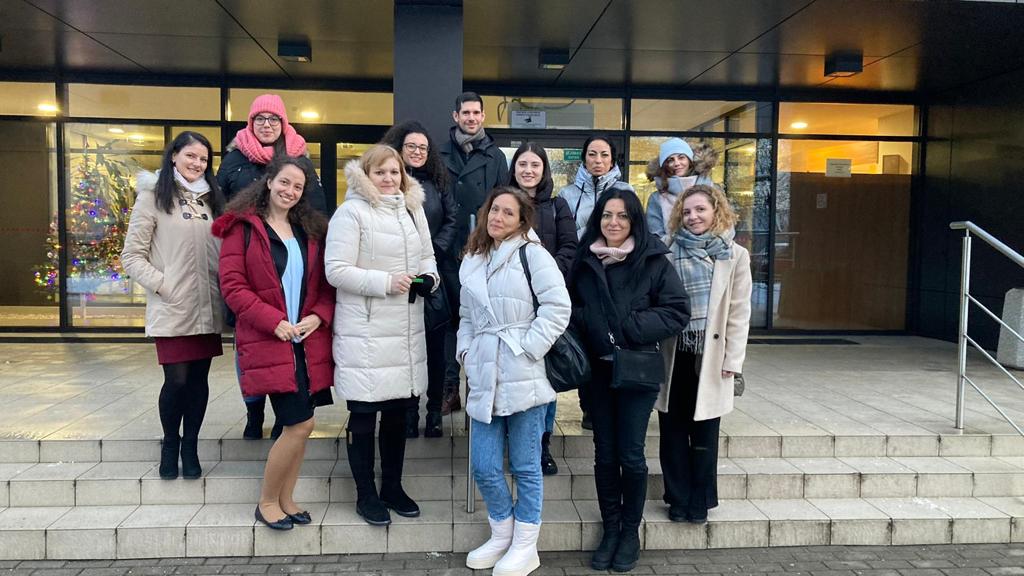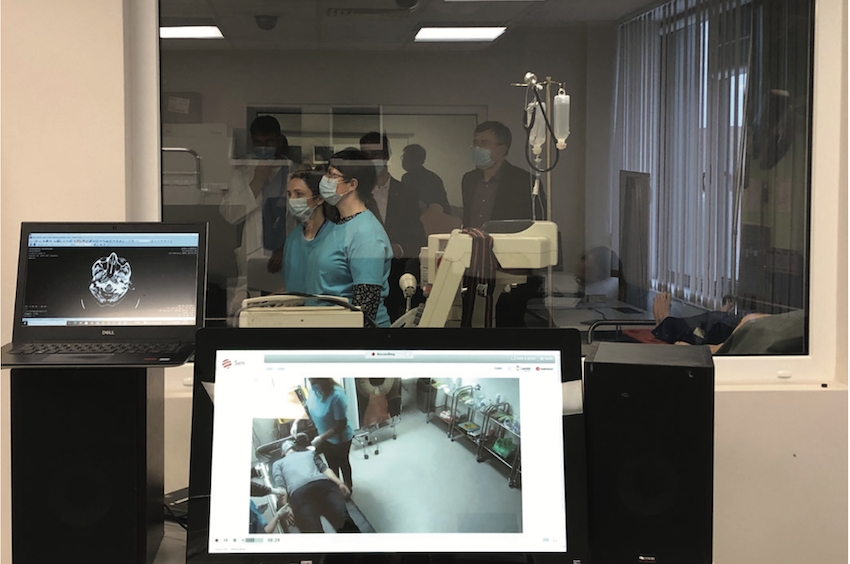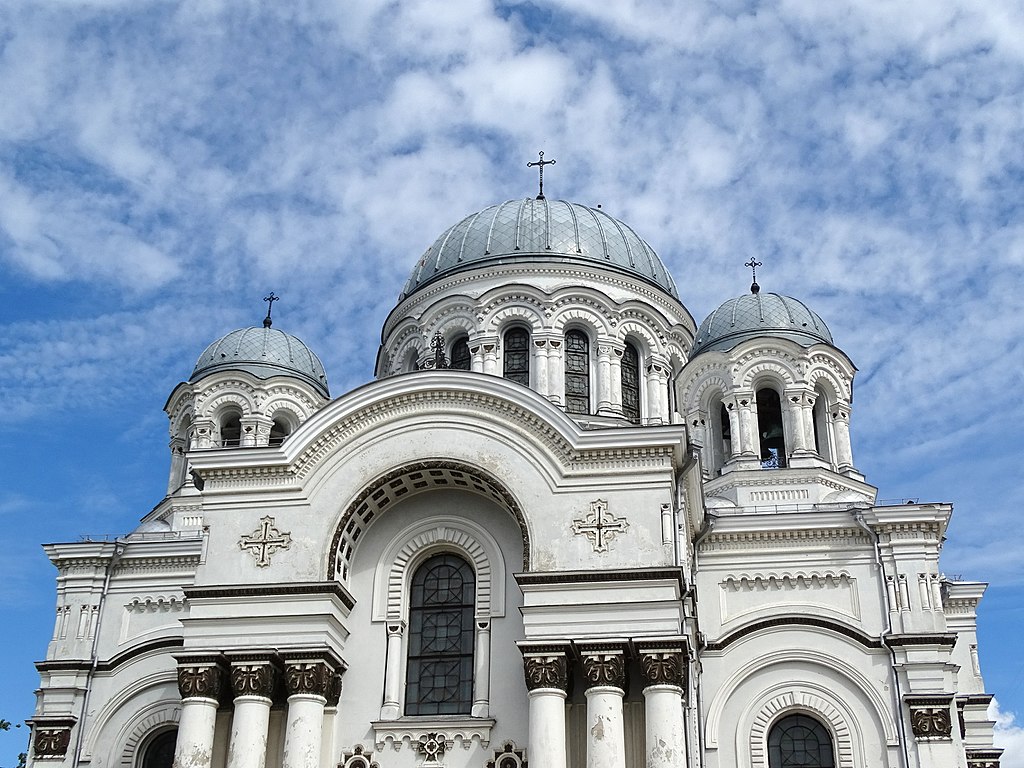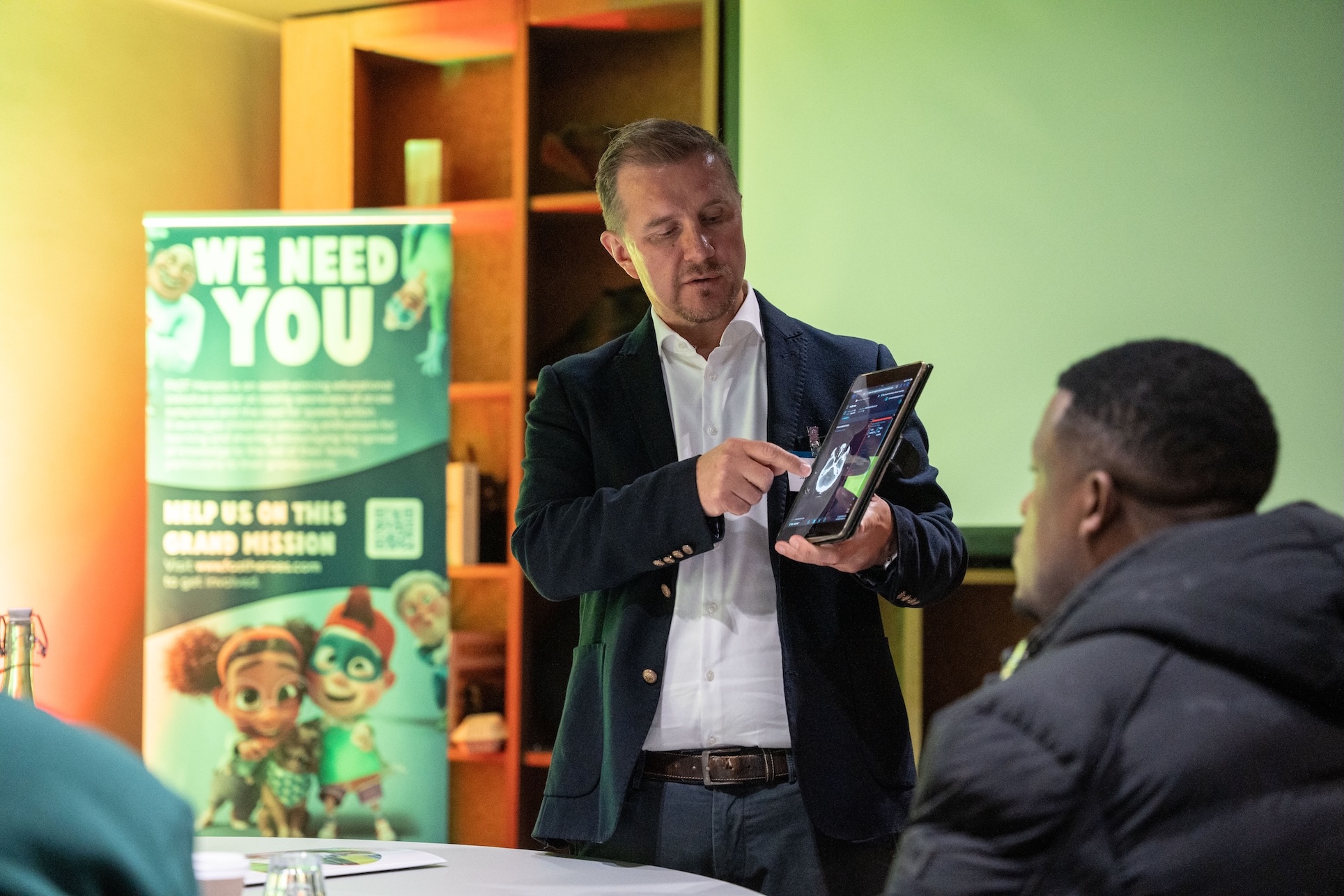
Dr Lengyel Gabriella Kincsó jest rezydentem neurologii w szpitalu Saint Pantaleon w węgierskim mieście Dunaújváros – "przyszłego neurologa", ponieważ dzwoni do swojego konta na Instagramie, gdzie co grudzień publikuje nowy obraz tego samego choinki. Jednak w grudniu przed wkroczeniem na choinkę dr Kincsó opublikowała galerię zdjęć wykonanych w Kaunie na Litwie.
Jest Kościół Świętego Micharu, Archangel, pokryty śniegiem bastion i okrągłe wieże cegiełowe Kaunas Castle, Boże Narodzenia w Laisvés Avenue, najdłuższa ulica pieszych w Europie Wschodniej oraz wejście do Szpitala Litewskiego Uniwersytetu Nauk Medycznych (LSMU), największa i najbardziej zaawansowana instytucja medyczna w krajach bałtyckich.
"Wydarzenie symulacji udaru w Kaunie w bożonarodzeniowym nastroju z cudownym zespołem" - napisy dodają. Ostatni obraz przedstawia "zespoł cudowny" – grupę lekarzy z Bułgarii, Węgier i Rumunii, którzy właśnie przeszli dwudniowe szkolenie w zakresie udar mózgu w ośrodku symulacji w LSMU.
Było to trzecie zdarzenie symulacja, które miało miejsce w Kaunie, ponieważ temperatura spadła między wrzesniem a grudniem 2022 r. Czwarty egzemplarz dla lekarzy z Ukrainy został zaplanowany na listopad, ale został odroczony po wyraźnym pocisku podnosił obawy, że wojna Rosja-Ukraina rozlewała się na polskie sąsiady.
Litwa ma swoje granice z Polską, Łotwą, Rosją i Białorusią. Jest to największy kraj bałtycki, region nieproporcjonalnie dotknięty udar. Dożylna tromboliza (IVT) stała się dostępna w dwóch szpitalach w Capital Vilnius w 2002 r., a z 2007 r. zaktualizowano wytyczne Litewskiego Towarzystwa Udarowego zalecały IVT jako pierwszą linię leczenie udar niedokrwienny. Pierwsza trombektomia mechaniczna została wykonana w 2012 roku.
Jednak w latach przed 2014 r. mniej niż jeden procent pacjentów z udar niedokrwienny otrzymał terapia rekanalizacja, kiedy to utworzono krajową sieć leczenie udaru mózgu, którego celem jest posiadanie szpitala przystosowanego do leczenia udarów mózgu mózgu w ciągu godziny, w zasięgu każdego z 2,8 milionów obywateli Lithauni.
Od 2017 r. litewskie społeczności udar otrzymały wsparcie Inicjatywa Angels. Wprowadzono monitorowanie jakości i włączono do RES-Q szpitale. Do 2020 r. wskaźniki leczenie zarówno tromboliza, jak i trombektomii były zgodne z założeniami planu postępowania udarowego dla Europy na rok 2030, a wskaźniki śmiertelność w szpitalu zmniejszyły się poniżej 10% w większości ośrodków udar.
W przypadku LSMU w Kaunas średni czas oczekiwania między przybyciem do szpitala a podaniem leku spadł do 34 minut. Podczas wizyty w szpitalu konsultant Angels, Ricie Rodrigues, zwiedził kampus, w tym nowe, zaawansowane centrum symulacja, które zostało utworzone, aby studenci i mieszkańcy mogli nauczyć się, jak radzić sobie z sytuacjami zagrażającymi życiu w bezpiecznym środowisku.
"Dlaczego jej nie używa w przypadku udar mózgu?" zaproponowała.
To był pomysł, który przekształcił szkolenie dotyczące udar na Litwie i zainicjował współpracę Angels i LSMU, dzięki czemu centrum symulacja w Kaunas stanie się punktem odniesienia w poprawie jakości leczenie udaru w Europie Wschodniej i Środkowej.

WSTĘPNE plany dotyczące przyniesienia międzynarodowych grup do Kaunasa na szkolenie zostały podyktowane pandemią Covida, ale wznowione pod koniec 2021 roku.
W styczniu 2022 r., pilotażowe wydarzenie dla lekarzy z Ukrainy, Białorusi i bardziej odległych sąsiadów, w tym Gruzji i Mołdawia, było bardzo dobrym przykładem przyszłych wydarzeń.
Na podium w pierwszym dniu byli dwoma ekspertami z Kaunas i dwóch z Wilnie – neurologami – prof. Antanasem Vaitkusem i dr prof. Vaidasem Matijosaitis z Kliniki Neurologii w LSMU, oraz prof. Aleksandrąsem Vilionskim i prof. Daliusem Jatuzisem, odpowiednio kierownikiem centrum leczenia udarów i Uniwersytecki im.
Przedstawili oni przegląd postępowania w przypadku udar o ostrym przebiegu oraz wartość symulacja w ramach szkolenia udar i przekazali Angels informacje na temat przebiegu udar mózgu na Litwie w ciągu pięciu lat. Po zwiedzaniu oddział lecznia udarów LSMU oraz sal ratunkowy i obrazowych był to czas akcji, ponieważ uczestnicy zostali podzieleni na zespoły i przedstawieni w serii scenariuszy klinicznych.
Rita wyjaśnia, jak to działa. Role są zmieniane w zespołach, więc każdy ma szansę na udział w badaniu jako neurolog, ratownik medyczny, pacjent i pielęgniarka. Podczas gdy jeden zespół bierze udział w symulacja, innym przydzielono mu role, które muszą uważnie obserwować i komentować podczas podsumowania.
Przed wydarzeniem uczestnicy otrzymują kwestionariusz przed warsztatami, aby uzyskać informacje na temat warunków panujących w poszczególnych krajach.
Zdolność prezenterów do dostosowania dyskusji do poziomu doświadczenia w sali jest jednym z powodów, dla których wydarzenia te są tak udane, mówi Rita.
Inną zaletą jest to, że szkolenie może być również oferowane w języku rosyjskim, który mówi jako język obcy przez ponad 60 procent Litwy.
Lekarze odwiedzający mają również wiele do nauczenia się od zespół udarowy w Kaunie.
LSMU to już wiodący centrum leczenia udarów, kiedy Rita po raz pierwszy otrzymała wiedzę na temat prof. Antanasa Vaitkusa i jego zespołu w 2017 r. Przez całą dobę dostępne były usługi ratunkowy, obrazowe i patologiczne, pacjentom z udar nadano priorytet w laboratorium i pracownia TK, a pacjenci byli w stanie korzystać ze specjalistycznych łóżek po ostrym leczeniu.
Ścieżka pacjent z udarem była dobrze zorganizowana i obejmowała kluczowe działania priorytetowe zalecane przez Angels – badanie POC w kierunku stężenie glukozy we krwi i INR oraz leczenie pacjent podczas TK.
Rita i zespół zgodzili się ustalić cel od przyjęcia do wdrożenia igły poniżej 45 minut, chociaż dwie kolejne symulacje sugerują, że mogliby zrobić jeszcze lepiej. W pierwszej rundzie zatrzymali zegar na 15 minut, a następnie zgolili kolejne osiem minut w drugiej.
Pięć lat później LSMU ma idealną ścieżkę, mówi Rita. Po szybkim zatrzymaniu się na oddziale ratunkowy pacjent przechodzi bezpośrednio do pracownia TK (na oddziale ratunkowym znajdują się dwie osoby) i po przyjęciu na oddział lecznia udarów.
Doświadczenie w Kaunas wyznacza wysokie standardy dla lekarzy, takich jak "przyszły neurolog" Lengyel Gabriella Kincs Oprócz tego zespół cudowny, który udawał się za zdjęcie grupowe przed wejściem LSMU w grudzień na śnieg, jest teraz nieformalną siecią udar, której członkowie obiecali, że będą nadal dzielić się doświadczeniami zagranicą.


